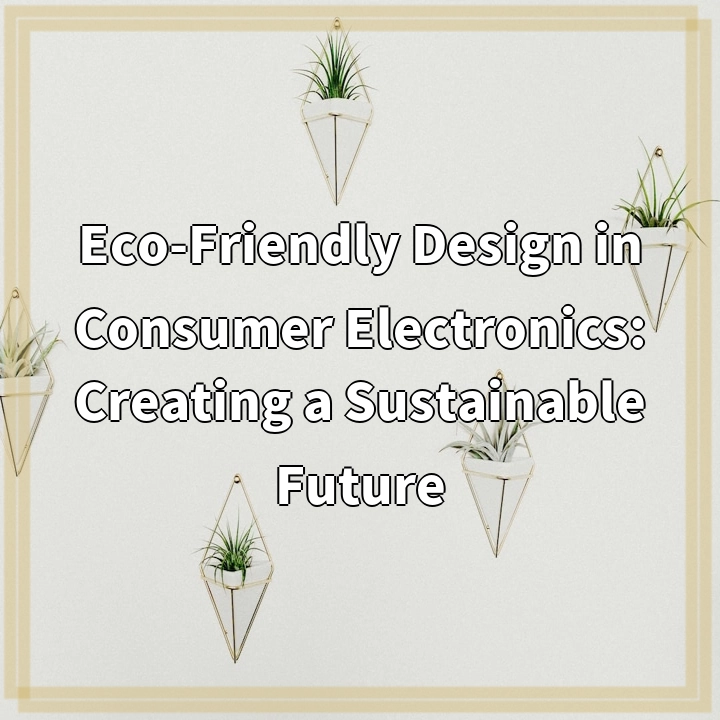
What is Eco-Friendly Design in Consumer Electronics?
Eco-friendly design in consumer electronics refers to the incorporation of sustainability practices throughout the lifecycle of electronic products. It involves considering the environmental impact of manufacturing, usage, and disposal of these devices, with the aim of reducing resource consumption and minimizing harmful effects on the planet.
Real-World Problems Associated with Eco-Friendly Design in Consumer Electronics
While the concept of eco-friendly design in consumer electronics is gaining traction, several challenges and issues persist in its implementation.
1. Limited Awareness
One of the significant challenges is the lack of awareness among consumers regarding the environmental impact of consumer electronics. Many people are unaware of the toxins released during production, energy consumption during use, and hazardous e-waste generated upon disposal.
2. Fast-Paced Technological Advancements
The rapid pace of technological advancements creates a constant demand for the latest gadgets and devices. This leads to a shorter lifespan for electronics, as newer models with enhanced features are regularly introduced. The fast turnover rate contributes to the growing e-waste problem and undermines efforts towards sustainable device usage.
3. Complex Supply Chains
The complex supply chains of consumer electronics pose challenges for eco-friendly design. Raw materials and components often come from various locations globally, making it difficult to track and minimize the environmental impact at each stage of production.
4. Design Trade-Offs
Eco-friendly design may require trade-offs with certain features or functionalities to reduce resource consumption or increase recyclability. Balancing sustainability goals with consumer demands and expectations can be challenging for manufacturers.
5. E-Waste Management
Effective e-waste management is a critical aspect of eco-friendly design, yet it remains a pressing global issue. Many electronic devices end up in landfills, leaching hazardous substances into the environment or being improperly recycled, leading to resource wastage and pollution.
In conclusion, eco-friendly design in consumer electronics strives to minimize environmental impact throughout the lifecycle of electronic products. However, challenges such as limited awareness, fast-paced technological advancements, complex supply chains, design trade-offs, and e-waste management need to be addressed to create a truly sustainable future for consumer electronics.

Solutions for Eco-Friendly Design in Consumer Electronics
Despite the challenges, several solutions and initiatives are being implemented to promote eco-friendly design in consumer electronics and create a more sustainable future.
1. Education and Awareness
Increasing awareness among consumers about the environmental impact of consumer electronics is crucial. Education campaigns, labeling schemes, and transparent communication from manufacturers can help inform consumers and enable them to make more sustainable choices.
2. Extended Product Lifespan
Promoting product longevity through modular designs, upgradability, and repairability can help reduce electronic waste. Encouraging users to keep their devices for longer by providing software updates and technical support can also contribute to enhancing the lifespan of consumer electronics.
3. Closed-Loop Systems and Circular Economy
Implementing closed-loop systems involves designing products for easy disassembly and material recovery, allowing components and materials to be recycled or reused in the production of new devices. Embracing the principles of the circular economy helps minimize resource extraction and waste generation.
4. Industry Collaboration
Collaboration among various stakeholders, including manufacturers, suppliers, policymakers, and environmental organizations, is essential for driving sustainable change in the consumer electronics industry. Sharing best practices, setting industry standards, and collaborating on research and development can foster innovation in eco-friendly design.
5. Responsible E-Waste Management
Establishing effective e-waste management systems, including collection centers, safe disposal methods, and proper recycling facilities, is crucial for minimizing the environmental and health risks associated with electronic waste. Encouraging consumers to recycle their old devices and providing convenient recycling options can help address this issue.
In conclusion, addressing the challenges associated with eco-friendly design in consumer electronics requires a multi-faceted approach involving education and awareness, promoting extended product lifespans, implementing closed-loop systems and circular economy practices, fostering industry collaboration, and ensuring responsible e-waste management. By adopting these solutions, we can create a more sustainable future for consumer electronics.















